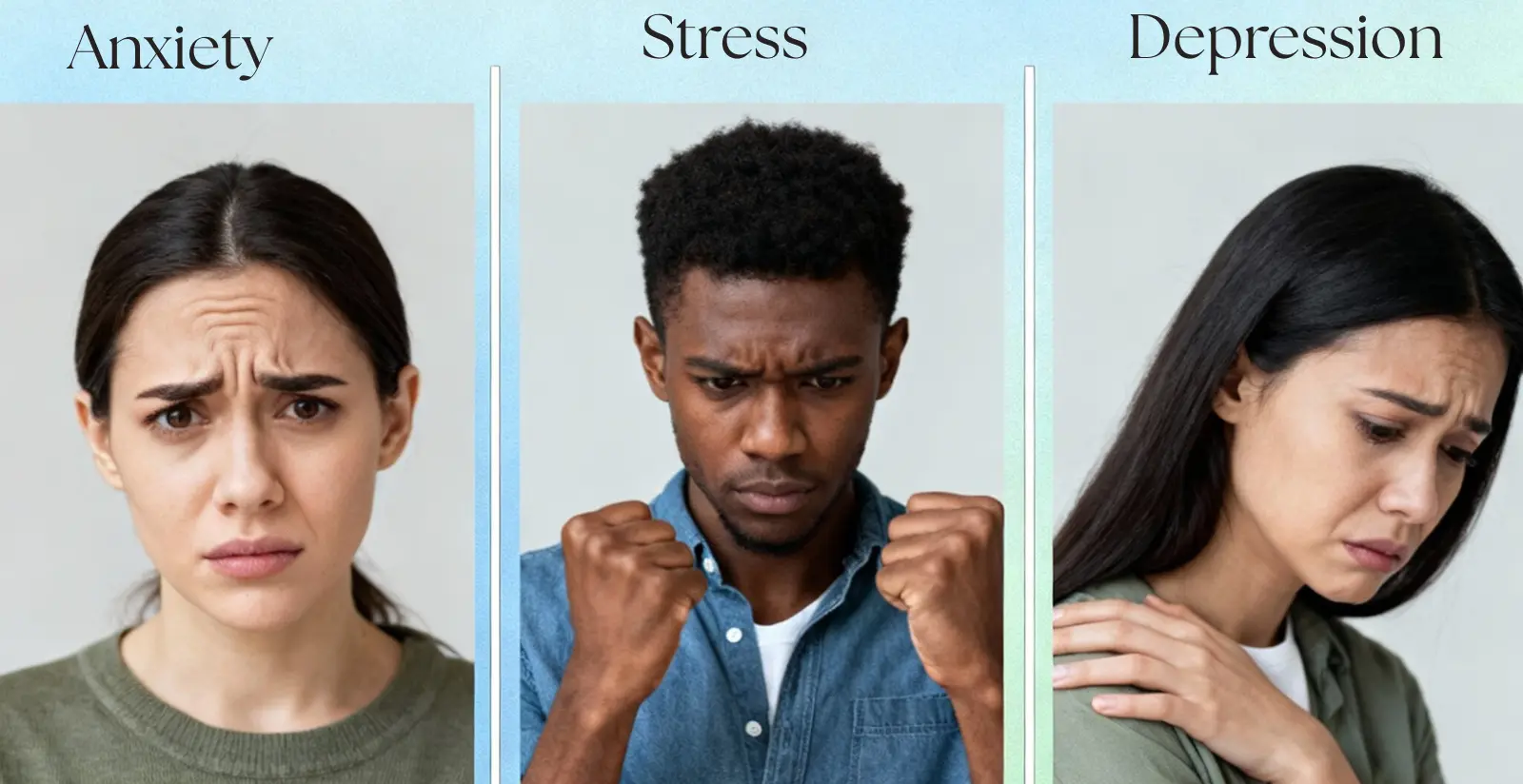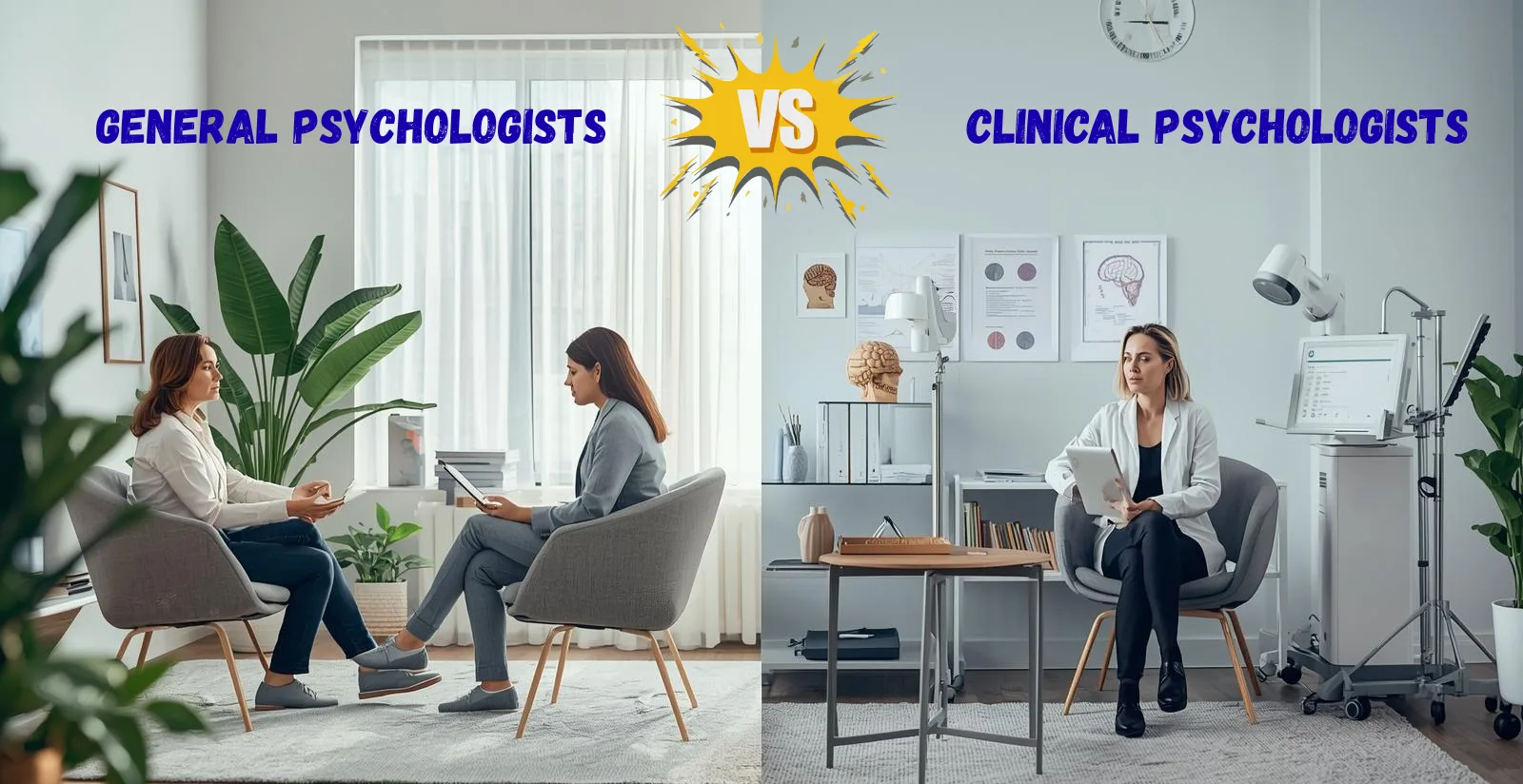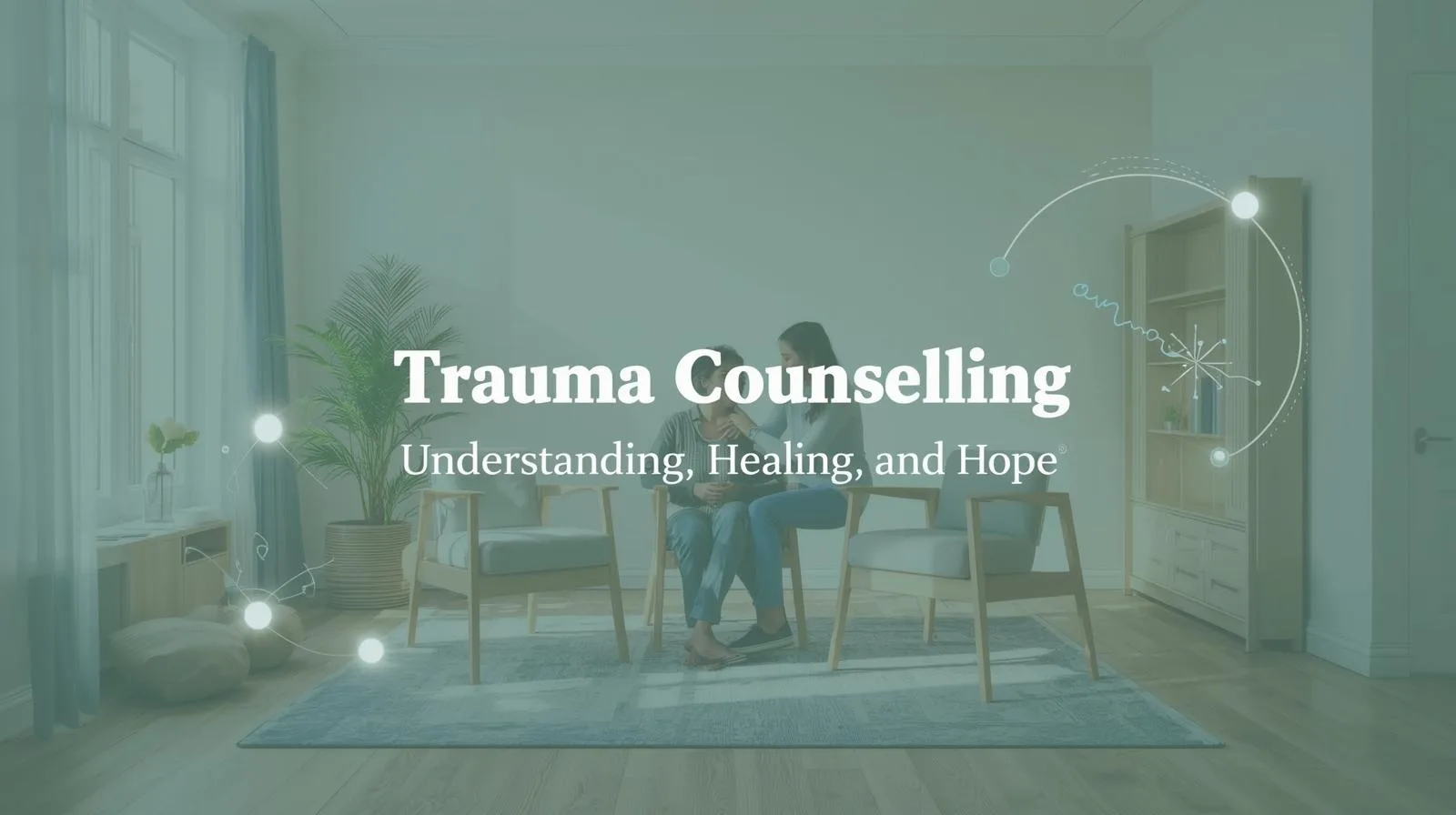It’s common to use terms like stress, anxiety, and depression interchangeably in everyday conversation. We might say, “I’m so stressed,” when we really mean we feel anxious, or describe ourselves as “depressed” when we are just having a bad week.
However, when it comes to mental health, understanding the differences between these three common experiences is the vital first step toward seeking the right kind of support. While the symptoms frequently overlap, stress, anxiety, and depression are fundamentally different in their cause, focus, and duration.
Here is a simple guide to help you clarify what you, or someone you care about, might be experiencing.
1. Stress: The Body’s Response to a Demand
Stress is best defined as a physical and emotional response to an identifiable external challenge or demand. It is a natural human reaction designed to help us respond to tough situations, such as a major deadline at work, a conflict in a relationship, or managing financial pressures.
The Key Characteristic: Stress is typically temporary and has a clear external trigger. Once the difficult situation resolves, the stress response usually subsides.
Common Signs of Stress:
- Physical: Headaches, general body aches, and muscle tension; difficulty concentrating; feeling tired or having low energy.
- Emotional: Feeling overwhelmed, irritable, or unusually moody.
- Behavioural: Difficulty sleeping (often related to ‘shutting off’ the mind).
The Overlap: If stress becomes chronic—meaning the challenge never goes away or you never give your body a break—it can easily lead to or worsen clinical anxiety or depression. This is why addressing chronic stress is often part of good counselling for anxiety or depression treatment.
2. Anxiety: The Pervasive Future Fear
While stress is rooted in a present demand, anxiety is characterized by a feeling of unease, worry, or fear that is primarily focused on the future or an imagined threat.
A healthy amount of anxiety is normal (like nerves before a big event). Still, in a mental health context, anxiety refers to a state that is ongoing, difficult to manage, and actively interferes with a person’s daily life. It often feels as though the mind is stuck in a perpetual “what-if” loop.
The Key Characteristic: Anxiety is defined by overwhelming, persistent worry and restlessness that may seem out of proportion to the actual situation. If this defines your experience, exploring counselling for anxiety is an important next step.
Common Signs of Anxiety:
- Emotional/Cognitive: Excessive worry or fear about everyday situations; feeling constantly “on edge” or restless.
- Physical: Racing heart, shortness of breath, nausea, or stomach distress; persistent muscle tension.
- Behavioural: Avoiding situations, places, or people for fear of feeling anxious or having a panic attack.
3. Depression: The Pervasive Low Mood
Depression (specifically Major Depressive Disorder) is not just feeling sad; it is classified as a mood disorder that profoundly affects a person’s feelings, thoughts, and behaviour over a prolonged period. It often involves a pervasive, emotional numbness or sadness that lasts for weeks or months.
The Key Characteristic: Depression is marked by an ongoing low or empty mood coupled with anhedonia—the significant loss of interest or pleasure in activities that were once enjoyable. If you recognize these pervasive feelings, seeking counselling for depression is highly recommended.
Common Signs of Depression:
- Mood: Persistent sadness or feelings of emptiness that last most of the day, nearly every day.
- Interest: Loss of interest in hobbies, sex, or socializing (anhedonia).
- Energy: Significant fatigue or loss of energy.
- Physical: Noticeable changes in sleep patterns (insomnia or oversleeping) and/or appetite leading to weight changes.
- Cognitive: Feelings of hopelessness, worthlessness, or excessive guilt.
Summarizing the Core Differences
| Feature | Stress | Anxiety | Depression |
| Primary Driver | External pressure or challenge (e.g., job deadline). | Internal, persistent fear/worry about the future. | Persistent, low mood and loss of pleasure. |
| Focus | The present situation. | Future dangers and “what-ifs.” | The past and present—a general sense of hopelessness. |
| Resolution | Usually fades when the external challenge is resolved. | Persists regardless of the situation; requires coping strategies. | Requires treatment; does not usually fade on its own. |
When to Seek Professional Support
Understanding the difference is helpful, but the most crucial step is knowing when these feelings have moved past a normal phase and require professional intervention.
It is time to seek support if:
- Your feelings of worry or sadness persist for more than two weeks.
- Your symptoms prevent you from maintaining your usual routines at work, school, or home.
- You find yourself withdrawing from friends, family, and activities you usually enjoy.
The good news is that both anxiety and depression are highly treatable. Working with experienced depression and anxiety therapists can provide you with effective, evidence-based tools, such as Cognitive Behavioural Therapy (CBT), Mindfulness, or talk therapy, to help manage your symptoms and improve your quality of life. For residents in Alberta, finding specialized depression therapy Calgary based can offer localized and focused support.
If you’re finding these challenges overwhelming, please know that you don’t have to navigate them alone. Reaching out for professional support is a powerful act of strength and self-care. Contact AM Counselling Services today. We are here to listen, help you understand your experiences, and develop a personalized plan for hope and healing.



